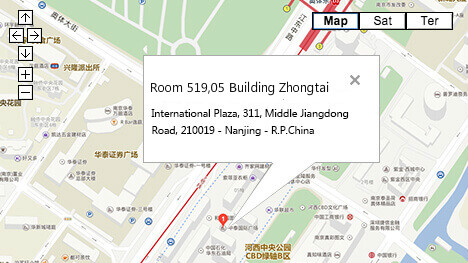Pins recall alert published by the United States Consumer Product Safety Commission ( CPSC) and…
China Manufacturing and Product Type Chaos
In the old days, purchasing products from China was relatively simple. The product was a basic “off the shelf’ product. The product was a fungible, internationally traded products, such as white t-shirts, underwear, medical gauze, rubber gloves, tableware and similar. For that reason, specifications were set based on an internationally accepted standard. Neither party set the standards; the standards were set by the market. For these types of products, purchases based on standard international purchase orders was the norm. Though the purchase order approach never worked well, at least for outlining the basic quality standards and business terms, purchase orders were adequate.
The first stage in complicating the system was when foreign buyers began requiring their Chinese factories to do some simple customization of the factory’s off the shelf product. This usually involved little more than putting the buyer’s brand name on the item and its packaging. The next stage of complication came when foreign buyers came to China with a completed product and requested their factory copy it. Since there was a physical item as a basis, there was a clear standard for determining specifications and quality. The copy was either good or bad and it was relatively easy to decide. So even in this era, a simple purchase order usually was sufficient to set out the basic terms of the agreement between the parties.
In the current world of contract manufacturing in China, the situation has become far more complex. It is no longer sufficient to simply set out the terms of the agreement in a simple purchase order or a purchase memorandum. One reason for this complexity is that there is no longer a single type of product being purchased. Dealing with the proliferation in product types has made drafting contract manufacturing agreements progressively more challenging.
For example, even in a very basic contract manufacturing relationship, the foreign buyer is typically dealing with four completely different types of product. The China lawyers at my firm call that the “standard mix.” For this set of products, we typically use the following terms:
1. Manufacturer Standard Product (“Standard Product”).
2. Customized Standard Product (“Custom Product”).
3. Buyer Designed Product.
4. Co-Designed Product, where Buyer claims to own the design IP.
We often call call both 3 and 4 “Buyer Designed Product,” since the buyer claims to own the intellectual property in each case, so there is no real need for two different terms. However, one of the first issues we often confront is that in the case of 4, Co-Designed Product, the Chinese factory usually does not agree that the buyer owns all the intellectual property. For this reason, in defining the term, we make clear the entire ownership rests with the buyer, without regard to the participation of the factory in the design process. This forces the factory to make clear at the start whether will it assert that its own the IP.
Working with these four categories of product in a single contract manufacturing agreement is difficult, but there are other types of products where IP ownership is even more difficult to nail down, making drafting (and doing business) even more difficult. Consider the following:
1). Buyer standard product, base product, or “off the shelf” product is often what we can more technically call an “open source” product where specifications are an industry standard. That is, no one owns the design of a white t-shirt or a pair of flip flops or surgical gauze. These products are standard and made all over the world and they are international set specifications. For these products, the specifications are taken from the international industry standard and the factory is held to that standard. An example is thread count for the fabric used to make t-shirts or underwear.
2. There is, however, another type of “off the shelf” product: this is product for which the factory claims that it owns the design of that product. In some cases, the manufacturer did the design and really does own the design. In other cases, the factory “borrowed” or “appropriated” the design from someone else. Often, these are more complex devices like equipment, machines and electronic devices for which the patent has expired and anyone is free to make a copy. However, in other cases, the factory did in fact steal the design from some other entity that claims design ownership.
In the past, we tended to call both 1. and 2. above “manufacturer base product” or “standard product” or “off the shelf product”. But it is important to note that these two types of product are really quite different. For example, for 2, the specifications come from the factory (not industry standard), the warranty is that the factory will meet its own specifications and there should be an additional warranty from the factory that the manufacturer really does own the IP rights in the product.
Since the issue is usually ignored, there has been no good term for identifying product type number 2. That is, buyers tend to treat product type number 2 as if it were the same as number 1, which is a mistake. For clarity, 1 should be called “off-the-shelf” product or “standard product” or “base product” while 2 should be called “manufacturer proprietary product” or something like that. On the ground, these two types of products are often not clearly identified by the factory, making it even more difficult to determine what is going on.
But the fact is the legal situation for these two types of product is entirely different. In some cases, truly fungible product of type number 1 can be purchased using a purchase order or a standard form agreement. This is not true for the type 2 product where a completely different legal approach is required. But it is not possible to know what to do until the type of product has been properly identified.
3. There then is a third type of product where the factory owns the core technology but the foreign buyer owns the external “shell.” We see this a lot with medical and electronic devices. The factory owns the technical internals and the foreign buyer owns the design in the case and other housing for the technical internals. The normal position of the IP ownership taken by the factory is that the buyer is free to take the shell to another factory, is not free to take the technical internals to any other factory.
Many buyers do not understand this. They come to the factory with the opposite interpretation. The foreign buyer believes they should be free to take the entire unit to another factory for manufacturing. This mistake in interpretation has become quite common in the past three years and it has caused many disputes and eventual failures in production. In every instance seen by the China attorneys at my firm, the foreign buyer wanted to take the entire product to a different factory and just assumed it could do so and actually built its business model on that assumption. In each case, the Chinese factory refused late in the process and basically halted the product commercialization process. No venture capital fund would provide funds for a product where a single Chinese factory controls production.
4. Finally, there is a the truly co-designed product. In this case, both the buyer and the factory developed the product working together. This is the type of product for which a Product Ownership or Co-Development agreement is required. See Hardware Co-Development in China: Do it Right, Part 4 (and the previous three posts in this series). Without such an agreement, the buyer often believes it owns the design, but in fact either a) both parties have equal ownership in the design or even worse b) the Chinese factory owns the entire design because it did the hard creative work. The foreign buyers are usually unaware of the basic legal rules in this area and during the co-design process they lose ownership and control over their key product IP. Usually this happens before the buyer contacts a lawyer with China manufacturing experience. For examples of how companies lose their IP, check out China and The Internet of Things and How to Destroy Your Own Company.
As you can see, the issue of just what type of product is being purchased from a Chinese factory has become complex. The situation will become even more complex as more IoT and related smart products are produced that combine design, hardware and software with inputs from heterogenous sources, many of which are not in the control of either the buyer or the manufacturer. So the days of a bare purchase order are long over. Moreover, the days of a simple, one size fits all purchase agreement are also over. But many buyers still think of the process as being the same as in the old days of purchasing fungible off the shelf products.
By Steve Dickinson on April 3, 2018 POSTED IN CHINA MANUFACTURING


This Post Has 0 Comments